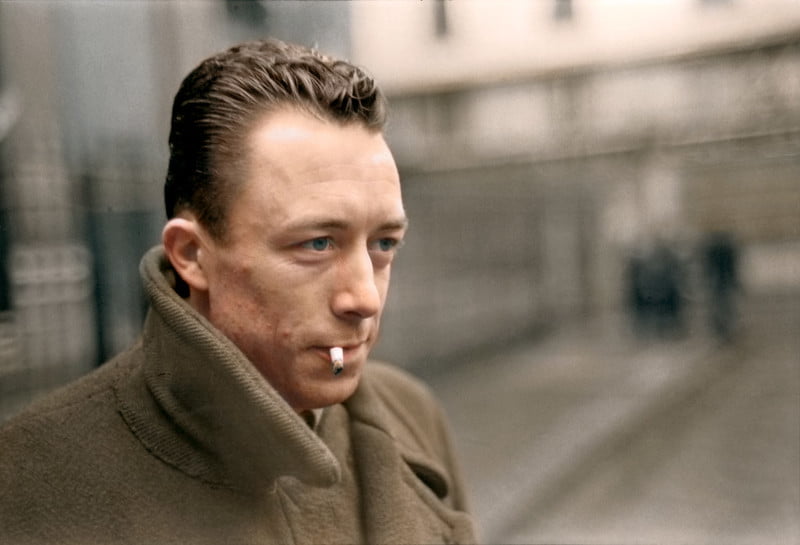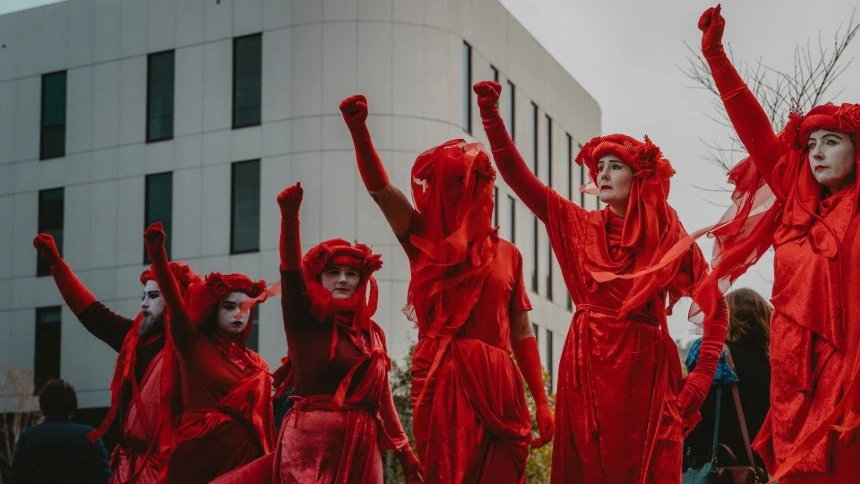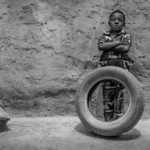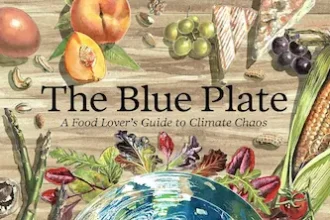Contemporary Ecological Ethics
The bleak realities of contemporary environmental degradation have been ever-mounting and well known since at least the 1980s. While some people still attempt to deny the imminent climate catastrophe, usually in order to support self-interested agendas of wealth and power, the evidence of human created climate disaster is generally clear to the public.
Schoolchildren like Greta Thunberg have taken to the streets to protest the devastation they will have to face in their futures. Indigenous communities peacefully protest like Josephine Mandamin walking around the great lakes to draw attention to water pollution. Environmental groups like Extinction Rebellion glue their hands to great works of art to draw the attention of the rich and powerful to societal priorities.
Politicians make strong-worded promises. Corporations “green wash” their products in sustainability claims. But despite these affirmations from politicians and corporations, the necessary changes to make real impact remain elusive. Perhaps the political response to climate change was best described in 2021 by Thunberg with “Blah, blah, blah.”
In the Anthropocene, the action of work may involve grass roots activism, community gardens, and generally creating a world that is more hospitable to other beings.
It seems that the problem of a humanity-annihilating climate crisis is unconquerable in the shadow of late-stage capitalism and our present political structures. Turning away and ignoring this human-created reality has become one of the only viable options for many people. And while this may work for a time for those willing and able to bracket this truth, for most of us it returns in quiet moments, or disrupts our nights like Dickens’ Scrooge awakened by the ghost of Christmas future. Whether we think about it or not, the future is barreling toward us, and it is our choice what that future looks like.
We did not ask for this crisis and for most of us, who are not the 1% of wealthy humans, we did not create it. Yet we are endlessly and completely responsible for it, especially those of us living in relatively abundant countries like Canada. It is the existential crisis par excellence.
Simone Weil’s Contemporary Influence
In recent years, the philosopher Simone Weil has become increasingly popular, I think in many ways this is because she offers an unflinching engagement with atrocities and yet continues to act ethically and to find beauty and love in the world.

An ethnically Jewish woman born into 1909 Paris, Weil died at the age of 34 at a sanatorium in Ashford, UK. With her own crippling health struggles and the atrocities of the Second World War, her life can only be said to have been lived on the brink of annihilation both personally and globally.
Weil has given us the ideal and the reality that crushes that ideal.
Her work as a philosopher was an attempt to balance the chaos of her world with the joy of friendship, the beauty of nature, the communion of religious rites, and the love of God or ethical goodness.
While Weil’s work has long been relevant in the fields of religion, literature, and increasingly in political thought, her philosophy has never been brought into the realm of environmental ethics in a sustained way until now.
In my book, Ecological Ethics and the Philosophy of Simone Weil: Decreation for the Anthropocene, I apply Weil’s ethical structure to the current epoch of human-created climate crisis known as the Anthropocene. In so doing, I offer an ethical foundation for potential environmentally conscious actions in the world. In this article, I will set out the ethical structure that I have suggested in Weil, then rehearse a few of the ways the book argues that we can embody these actions in the Anthropocene.
The Structure of Weil’s Ethics
According to Simone Weil there are three main faculties that can ground our meaning and truth in the world: the faculty of knowing, the faculty of loving, and the faculty of willing. Most people, either consciously or unconsciously, uphold at least one of these faculties as their raison d’être or the truth of their own existence.
- The faculty of knowing, favored by people grounded in logic and rationality, seeks out practical information. We can find a concrete answer and explanation through a careful combination of empirical observation and rational deductions.
- The faculty of loving is the foundation for people who place the meaning or importance of existence on relationships. This faculty can also extend out to love and care for places and things, to a larger sense of love for our house, our job, or the care we take in our projects. In this sense, it includes but is not limited to relationships with other people. It can include any number of things we may love from a pet dog, to the concept of democracy, to our hometown. Anything that we can fix our sights upon and take care of, thus giving our life meaning.
- The faculty of willing is probably the most celebrated foundation for meaning at this particular cultural moment. It can be found in the “grind culture” or the celebration of “grit” and perseverance. In many ways, this faculty offers a foundation for the “American Dream” or the suggestion that hard work and tenacity allows humans to create the world and the life that they want. The faculty of the will allows the human to take control of their own life, to bear the burden of failures, and to navigate one’s life into success.
Existential Barriers to Meaning
While not necessarily definitive, these three faculties cover the vast majority of ways in which we create meaning in the world. And while they are theoretically sound, Weil argues that in the lived world of human experience, they become virtually impossible to maintain. The faculty of knowing will always eventually encounter absurdity in the world. This absurdity may be embedded in the human condition when we consider, for example, human’s choice of on-demand cheap and usually inane products over the survival of the species in the face of climate change in a capitalist economy.

But at a deeper level, following the philosopher Albert Camus (himself a great champion of Weil’s thought), at times we step back and see all our knowledge as utterly worthless, as Sisyphus rolling the boulder up a mountain every day just to watch it roll back down again. The major existential questions will never be answered and all of our knowing, while admittedly useful in our day-to-day lives, falls away to nothing when we are struck by the absurdity of human existence.
The world is rife with people whose dreams and goals have been overcome by suffering beyond their own control.
Similarly, the foundation of loving cracks upon the absence of that which we love. If all of our meaning has been poured into, for example, our family, what happens when they are all taken to a concentration camp or killed in war, as happened to so many during the time Weil was writing? If all our care and meaning goes into a career, when we lose that job, we are left with no worth or meaning in life. It is a certainty that we will all die and that all things will pass. As such, a life based upon loving a particular thing is guaranteed to rupture eventually.
Finally, the faculty of willing, despite its bravado and testament to the human spirit is by far the weakest faculty and most delusional of the three in Weil’s estimation. The faculty of willing is swiftly taken down by suffering. Returning to the American dream, we can consider the title of Steinbeck’s Of Mice and Men, a reflection on the plans humans make as opposed to the realities of existence. Like a mouse building a nest inadvertently destroyed by an unknowing gardener, our plans are often overwhelmed by a world cold and indifferent to our dreams and perseverance.
During Weil’s time, the limitation of suffering was incredibly clear for the marginalized of society, namely the ununionized poorly treated factory workers and front-line soldiers. With the rise of fascism, few people could escape suffering and the loss of will. This is not unique to her own time and is evident not just in marginalized people but also touches even those who double-down on notions of grit and grind culture. The world is rife with people whose dreams and goals have been overcome by suffering beyond their own control.
Moving from Agonism to Action
So far, Weil has given us the ideal and the reality that crushes that ideal. It is a rather grim and decidedly existential picture. But she does not stop there. Instead, she suggests that we are capable of transcending these two contradictory poles and finding a middle ground which will allow us to act ethically in the world.
In the paralysis that can arise between knowing and absurdity, Weil suggests we allow for both and cultivate wisdom in the practice of science. The two contradictory poles of loving and absence can be bridged in a shift to loving God or loving the universal alongside the particular and creating art.
The most oppressed and marginalized humans must take priority.
And in the agonism between willing and suffering, Weil advises we shift into consenting and work towards an ethical existence. This process ties our inherent faculties to our lived experiences and our necessary ethical actions in the world.
I must note that the ethical structure I have suggested is nowhere near this clear and distinct in Weil’s own thought. By suggesting it, in some ways I do an injustice to the fluidity of this structure and the dynamism of her thought but I also feel it is a helpful starting point for considering enacting her ethical thought in the world as long as there is a recognition that this structure is not solid but a place to jump into Weil’s thought and can be inverted, subverted, reversed, and even disregarded in the messy process of living an ethical life.
Living Ethically in the Anthropocene
One major creative license that I take with Weil’s ethics is to expand it beyond our responsibility to only human beings. I propose that our ethical work in this epoch of the Anthropocene carries with it responsibility to beings and creation beyond the human.
This is counter to Weil’s own thought, and to her credit, the wars raging across her short lifetime and the lack of awareness of pollution and impacts of oppression beyond the human being, make it an understandable limitation of her work. But in applying her work to the contemporary era, I believe the most ethical move is to expand it beyond the human while still allowing the human a certain level of ethical importance.
Universal love is extremely painful when we open it up beyond human beings in the Anthropocene.
In particular, the most oppressed and marginalized humans must take priority. Further, while we all have different inclinations and inspirations and will all excel at different actions and their myriad instantiations, Weil believes we must try to incorporate all three of these actions into our lives.
With this in mind, my book sets out a number of examples of these types of Weilian-inspired ecological ethical actions that we can observe in the Anthropocene in a recognition that it is difficult but not impossible to be ethical in this time of climate catastrophe.
On top of these examples, I also work with ways to move into Weil’s concept of attention in order to arrive at ethical ecological action. For the remainder of this article, I will consider the application of this structure to ecological ethics in our times.
From Knowing and Absurdity to Wisdom in Science
Wisdom in the Anthropocene is a balance of rational knowing and existential absurdity. It involves both the truths of the natural sciences and an intellectual curiosity that questions knowing, rethinks frameworks, and allows for non-scalable, anti-racist intersections across systems of thought. Wisdom in the Anthropocene takes science to be the best chance we have for truth and honors the lively nature of truths, allowing for new perspectives.
Art expresses love by recognizing the beauty, awesomeness, and devastation of that which we love.
Wisdom here points towards cultivating our understanding of the natural world and our interdependence with it. This knowledge can include multitudes of natural phenomena both great and small.
It is a knowledge that investigates with an emphasis on connection and relationality with all of the earth’s myriad ways of being. In the actions of natural science, as it is conceptualized in the Weilian context of knowing and absurdity through wisdom, one can begin to shed the notion of strict independence or autonomy and instead realize our interconnection as a part of the ecological sphere of the earth.
From Loving and Absence to Universal Love in Art
Universal love in the Anthropocene is the love of the land of our birth, the land of our ancestors, the land that co-created our language. We see this love perhaps most poignantly in immigrants and refugees, those who are displaced from their homes. There is a vast sense of loss in such a displacement, a loss of world. While the loss of one’s homeland cannot be replaced, love for one’s adopted land can be cultivated.
This is common in many indigenous philosophies such as in the work of Robin Wall Kimmerer or Simon Ortiz, where land is understood as both literally and symbolically that which creates a people. This love extends to the entirety of the surrounding world. It is a love that mourns the loss of rare plants, the animals killed at the side of the road, the forests bulldozed for pastures, and the pastures cemented for subdivisions. Universal love is extremely painful when we open it up beyond human beings in the Anthropocene.
Art expresses love by recognizing the beauty, awesomeness, and devastation of that which we love. It holds open our love of the particular in the face of the particular’s potential absence. It allows us to express a love of the Good, universal, or divine. By creating art that shows our love of other beings and things, we have the chance to give voice to the relationships that make our world meaningful and as such, to communally acknowledge the universal love between beings.
In the Anthropocene, art is a way to mourn, to remember, to love, to communicate. It is not just a human love expressed to a non-human being, but at its best, it is a listening and opening to the beings and things with whom we share our lives.
From Willing and Suffering to Consenting in Work
Weilian consent involves a blending of the willpower with attention to the surrounding world. The work of willing here is an assertion of the will in order to release the will. One can then move into negative attention or openness. This consent is not a quietism, nor does it mean one gives up on what one knows to be ethically right. The phenomenon of Weilian consent is similar to the serenity prayer in which one asks to know the difference between the things she can change and the things she cannot. It is a humility in which one recognizes her own limitations and then acts accordingly.
In the Anthropocene, the action of work may involve grass roots activism, community gardens, and generally creating a world that is more hospitable to other beings. The suffering that paralyzes our willpower, deeming it impossible and meaningless, is also that which inspires us to continue the work. Suffering has the power to throw us into despair, but so too does it have the power to incite our action and make us consent to the work before us.
Work in the Anthropocene is often driven by suffering. If we love the earth’s beings and know our interconnection with said beings, we consent to continue, to work against the odds for ethical action. We consent to the imperfection of our world and our work. We consent to reality in all of its necessity and suffering, but we do not consent to accepting it fatalistically. Instead, we find balance between love and suffering and to ease the affliction of others. This work does not hold the beauty of art and science, which in many ways makes it the hardest of the three actions.
Ultimately, one can move towards an ecologically ethical existence by loosely following these actions, allowing oneself to privilege the actions that work best for you but also pursuing the other actions to find balance in your ethical journey. And if this becomes complex or complicated, return to a main tenet of Weil’s ethical thought by noticing the most marginalized person (or in my application, also the most marginalized being or thing in the surrounding environment), then listen openly and without judgement to what they need.









